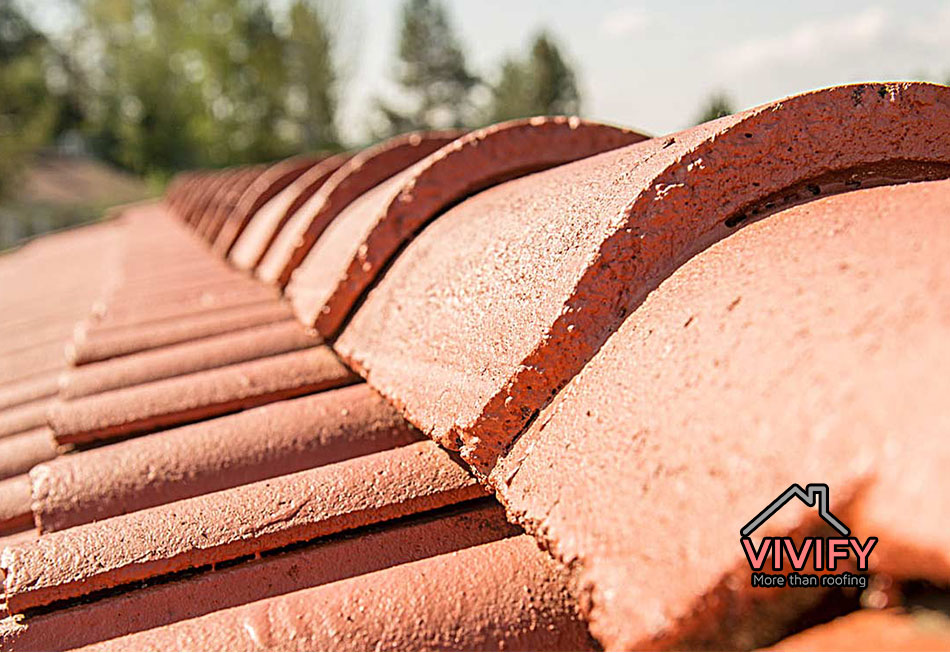
Does Heat Reflective Roof Paint Work?
In recent years, there has been a growing concern over climate change and rising energy costs. In response to this, a revolutionary product was designed. It has taken the paint industry by storm ever since. We’re talking about heat reflective roof paint, of course. And in this post we’ll take a close look at what it is and if it really works.
What is Heat Reflective Paint?
Heat reflective roof paint is helpful in cooling down your roof. This is due to the paint’s ability to reflect solar radiation. It eliminates solar heat before entering the building while drawing out excess heat. As a result, your building can benefit from better insulation.
There are many advantages to using heat reflective paint. It helps preserve your roof as it protects it from thermal shock and corrosion. It also reduces leaking. Having a heat reflective roof can even increase the value of your building.
When you use heat reflective paint, you’ll realise that you won’t need to use air conditioning as frequently. It can save up to 40% on your utility bill or reduce your energy usage by 25%. It can also lower the emission of carbon dioxide. Some estimates point to an offset of 18 tonnes of carbon dioxide in the average Australian household.
Moreover, this type of paint can help your building last longer. This makes heat reflective paint a more sustainable option for those who are environmentally-conscious.
Trust Energy Star Systems
When purchasing heat reflective paint, look for brands that display the Energy Star logo. This gives consumers peace of mind that the product is energy efficient. That’s because Energy Star has a great track record with helping households reduce their CO2 emissions while saving money.
Moreover, Energy Star is the brand that certifiers, builders and architects alike use when striving for quality and excellence. Energy Star’s heat reflective paint is the first and only coating that is Code Mark certified. It also complies with the Building Code of Australia.
Whether you are painting metal or a Colorbond roof, your building can benefit from heat reflective coating technology. In turn, its occupants will enjoy an environment that is no longer hot and humid.
In the home, this means greater comfort. In the workplace, this means more productivity as well as more stable conditions for storage.
What is TSR?
TSR stands for Total Solar Reflectiveness or Total Solar Reflectance. This is the method used for measuring the reflective capability of a surface’s coating. A solar spectrum reflectometer is used to measure TSR, with the number expressed as a percentage.
The higher the percentage, the more effectively a surface can reflect solar radiation. In other words, the roof will maintain a cooler temperature.
How Does Heat Reflective Paint Work?
To better understand how heat reflective paint works, we must first discuss energy spectrums. There’s a spectrum of energy that originates from the sun. There’s another that comes from building materials as well as those of the earth. All objects radiate energy at various degrees.
Solar energy is radiated on both a visible and invisible (infrared) spectrum. Objects like those you’d find in your house range between the mid and far end of the spectrum. Heat reflective paint works by interrupting the normal transference of this energy.
How is Energy Transferred?
Energy is transferred in three different ways: conduction, convection, and radiation. Each energy transfer can be countered by an insulation R-value, air-tightness layers, and a radiant barrier, respectively.
Each energy transfer can affect the energy efficiency of a building’s floors, walls, and ceiling. Radiant barriers can include metallic surfaces, Low-E films, and white paints.
As you may already know, the high solar reflectance of white paint minimises the absorption of direct energy from the sun. This is known as the albedo effect. Therefore, it is safe to say that white paint does help save energy.
The sun transfers energy to the earth in the form of solar radiation. In turn, the earth radiates heat back to outer space. The sun, however, only provides buildings with energy for a few hours a day. Therefore, more is needed to provide homes with a comfortable room temperature around the clock. This is where heat reflective roof paint can make a big difference.
What difference does it make for a house to have cool walls? Many houses have dark exterior walls. Although this is visually appealing, it is not the ideal choice of colour when it comes to energy efficiency. Simply put, dark colours absorb heat.
When exterior walls are painted with heat reflective paint, less heat is being absorbed. As a result, even if the walls are dark, a heat reflective coating will minimise thermal shock.
What difference does it make for a house to have cool roofing?
Heat reflective roof paint can reflect up to half of infrared light through solar radiation. Re-roofing isn’t necessary to help your house remain cool. Instead, you can save money by applying a heat reflective coating to your roof.
Myths About Heat Reflective Roof Paint
Heat reflective roof paint is impressive and can do much good for your building’s overall comfort and energy efficiency. However, consumers shouldn’t be quick to believe everything they hear about it. Whilst searching for roof restoration Melbourne, be wary of any false promises from sales reps trying to get you sign on the spot. Request datasheets for the products they are proposing to use.
That’s because some companies have advertised or marketed the paint’s physical characteristics and benefits in a way that is inaccurate or misleading. Let’s take a look at some of the myths surrounding heat reflective paint for your roof.
Can Applying Heat Reflective Paint Indoors Bring Up Room Temperature?
No, heat reflective paint is ineffective when used indoors. If the paint has no exposure to sunlight, then it won’t perform. The only product that can really keep energy within a building is bulk insulation. Clearly, then, it takes much more than a thin layer of paint to radiate energy.
Interestingly, this myth may have originated with TV ads about the product. In the advertisement, the “insulative” properties were tested in the presence of a blow torch. Other videos online demonstrated the same idea while using infrared heat lamps.
The fact of the matter is, only the heater itself is radiating heat. The supposed evidence is inconclusive in regard to a building’s walls, ceiling, and floors.
Does Heat Reflective Paint Keep A Building Warm in Winter?
No, heat reflective paint does not keep in the heat during the cold, winter months. The reason for this is simple. The name “heat reflective paint” says it all. The paint is solar reflective, which is part of the energy spectrum that is visible. It is not infrared reflective.
In winter, a home naturally loses some of its heat. It escapes from the roof via infrared radiation and is released into the atmosphere. Heat reflective paint doesn’t block or prevent the heat from leaving the building.
How to Design a More Sustainable Home
Choosing metal or a Colorbond steel roof, along with heat-reflective roof paint, is a great start to designing a “green” home. What are some other steps you can take?
Orientation
When it comes to home design, orientation is the direction in which the sun is facing your house. For instance, if a home is north-facing, living quarters will benefit from the sun’s warm rays in winter. In the summer, you can make use of eave-overhangs. Since the sun sits higher in summer, these will reduce your home’s exposure to direct sunlight.
Ventilation
Air movement is one of the most cost-effective and most sustainable ways of keeping cool in the summer. When doors and windows are positioned correctly, your home can take advantage of a cool breeze. This will deter you from having to turn on the air conditioning.
Thermal Mass
Thermal mass is a building’s ability to store heat. This is a great addition to your home, as it regulates temperature for you. For instance, it will retain the heat from sunlight during the day.
Then, when night falls and temperature drops, thermal mass will gradually warm up your home as it releases heat. Eaves are best for protecting thermal mass surfaces such as windows.
As also stated by the Australian Government:
Thermal Mass is the ability of a material to absorb and store heat energy.
 Colorbond Roof Sealing
Colorbond Roof Sealing
Roofing, on the other hand, is completely exposed. That is why many homeowners trust Colorbond steel as a roofing material. It has a low thermal mass and will function just as well.
Insulation
Insulation acts as a defensive barrier that controls how heat enters or exits your home. The amount of insulation needed, however, will depend on what materials you are using for your roof and walls. It will also depend on where these are situated in your home.
Effective Insulation is the best barrier against the summer heat and the winter cold, saving you up to 20% on your heating and cooling energy costs. Most Victorian homes already have some form of insulation but, if it has been in your roof for a while, it may not be performing as well as it could. – Sustainability.vic.gov.au
One particularly effective colour choice for a COLORBOND® steel roof is Dover White, which was a new addition in 2022. As the brightest white of their classic finishes, this shade is especially effective at reflecting heat from the sun. It is an ideal choice for homes with little natural shade.
Dover White has a solar absorptance (SA) of 0.28, which means that it will only absorb 28% of the solar radiation that it is exposed to. Low SA roof colours, therefore, mean cooler homes. Dover White provides one of the lowest SA ratings in COLORBOND’s® palette.
Furthermore, it has a solar reflectance index (SRI) of 88. With SRI, the higher the better, and the typical highest rating possible is 100. The only colour in the COLORBOND® palette with a better SRI is Whitehaven, coming in at 95.
However, it is a tone that many find too bright and is typically reserved for hot urban settings in which cool roofing is top priority. Dover White, on the other hand, strikes a perfect balance between aesthetic appeal and heat reflection.
Heat Reflective Paint Products
If you think that heat reflective paint could be right for your home, it’s time to consider what product is right for you. Here is an overview of some of the most popular heat reflecting paints on the market.
Cool Roof by Dulux Acra Tex
This paint uses InfraCool Technology to reflect a greater amount of sunlight. How does Cool Roof by Dulux Acra Tex achieve this? Keep in mind that the sun is capable of radiating both visible and invisible wavelengths.
Conventional paint colors absorb more heat because it doesn’t reflect as much InfraRed light. This wavelength is invisible and accounts for almost half of solar radiation. As a result, more heat makes its way into the building.
The purpose of InfraCool Technology is to make the colour a few shades cooler than that of your standard paint. This occurs when InfraCool increases the total solar reflection percentage of your roof. The more InfraRed radiation is being reflected from the roof, the cooler its surface temperature will be. This, in turn, will reduce heat and humidity inside the building.
Tileguard Heatguard
The company Regent Paints offers consumers Tileguard Heatguard. It is another heat reflective roof paint whose purpose is to repel solar heat.
A growing number of homes are being built or redesigned with the environment in mind. Improve your building’s thermal efficiency by using a product that is made to last. This paint works well with Colorbond steel roofing.
The roof in itself is already lightweight and insulated. Its low thermal mass makes it an excellent choice of material for energy-efficient roofing. In the summer, it helps keep the indoor room temperature cool.
A common strategy is to pair your Colorbond steel roof with Tileguard Heatguard heat reflective paint for enhanced thermal performance.
 Nutech NXT Cool Zone
Nutech NXT Cool Zone
Another product that makes for an environmentally responsible roof coating option is Nutech’s NXT Cool Zone. The heat reflective paint also does a great job of reflecting the sun’s infrared heat radiation.
Suitable for asphalt, concrete and terracotta tiles as well as metal roofs, the paint uses acrylic polymers that are 100% water-based. It also has lower VOC or volatile organic compounds than many other paints on the market. VOC are chemicals that off-gas and give a strong smell.
Nutech heat reflective roof paint has been certified by Good Environmental Choice Australia. This makes it a sustainable alternative for your roof.
The paint is also 100% waterproof. Waterproofing can reduce thermal conductivity which, in turn, improves the thermal insulation of your home during cold or rainy days. Moreover, Cool Zone has been approved by State and Federal energy rating requirements.
Nutech’s NXT Cool Zone paint is innovative because of its use of nanotechnology. These are ceramics that reflect solar radiation, or more specifically, infrared light. Its role is to reduce surface friction and dirt retention.
As a result, the roof coating has remarkable self-cleaning capabilities. The paint can reflect infrared wavelengths. Its exterior durability also outlasts many conventional acrylic roof coating brands in the paint industry.
The company also boasts some 46 different shades available in both High Gloss or Low Sheen. Homeowners can even have these shades custom colour-matched. Therefore, it is possible, even for roofs with dark colours, to reflect solar energy in a way that maximises comfort for a building’s occupants.
Datasheet can be found here.
How Does Heat Reflective Roof Paint Compare?
Heat reflective paint isn’t the only product or system that can deflect energy or insulation. There are also white paint, black paint, sarking, R4 bulk insulation, and brushed aluminium roofing. So how does heat reflective roof paint compare to these other products and systems?
Heat reflective paint is optimal when a building is in a hot and sunny location. And this, even if the roof is poorly insulated. If the roof does benefit from adequate insulation, though, this type of paint may be less cost-effective. In such a scenario, it would be best to use spray foam insulation. This would help minimise thermal leaks.
How to Improve the Performance of Your Roof?
What else can you use if your building benefits from adequate insulation? You may want to consider repairing the sarking that is damaged under your roof. Foil tape will do the trick. It would also be highly recommended for you to fix whatever gaps exist in your insulation.
A household can also save a lot of money by using expanding foam through an artificial sealing system. This can be placed around your roof. This will ameliorate air-tightness, as well as minimise the stack effect.
Conclusion
Heat reflective paint is a special coating with the ability to reflect solar radiation. This, in turn, improves the insulation of your building. Some benefits of using heat reflective paint for your roof include a longer-lasting roof, protection from thermal shock and corrosion, and reduced leaking.
This type of coating is a sustainable alternative for those who are environmentally conscious. It significantly reduces a building’s emission of carbon dioxide. Heat reflective paint can help reduce your household’s energy usage while reducing your utility bill. The coating is suitable for a variety of roofs, including metal and Colorbond.
If you are looking to reap the benefits of heat reflective roof paint, get in touch with Vivify Roofing today. Even if reflective paint isn’t right for you, we’ll help you find the solution you need to for a cooler, more energy efficient home.
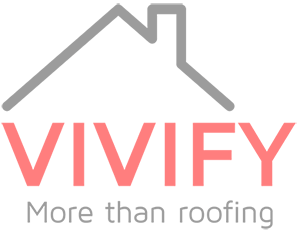
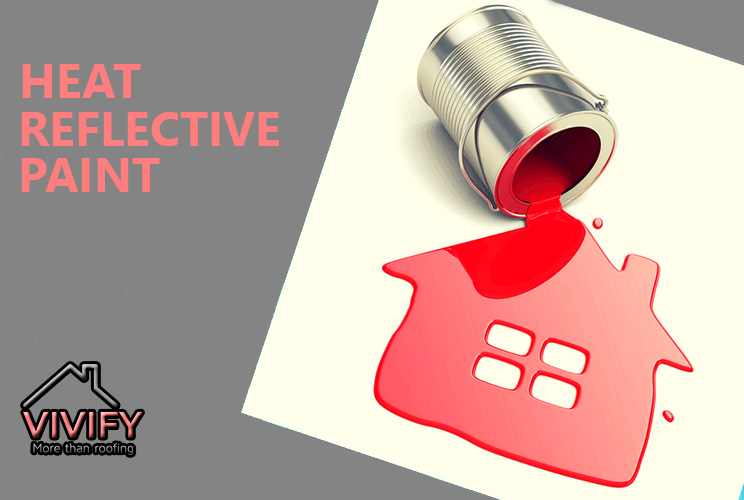
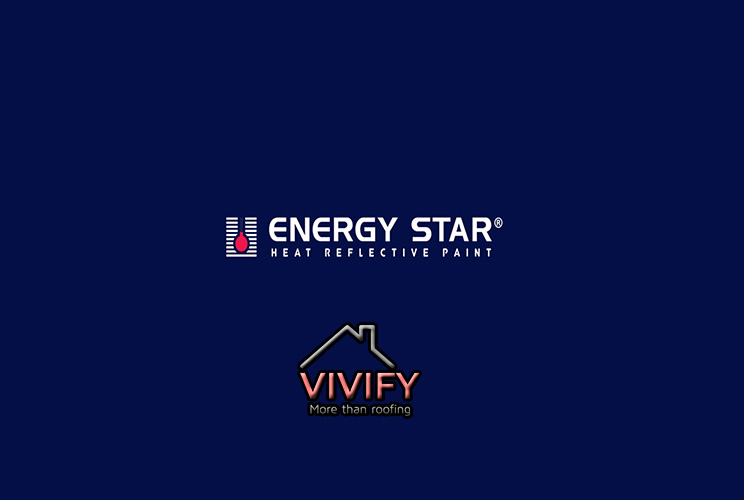
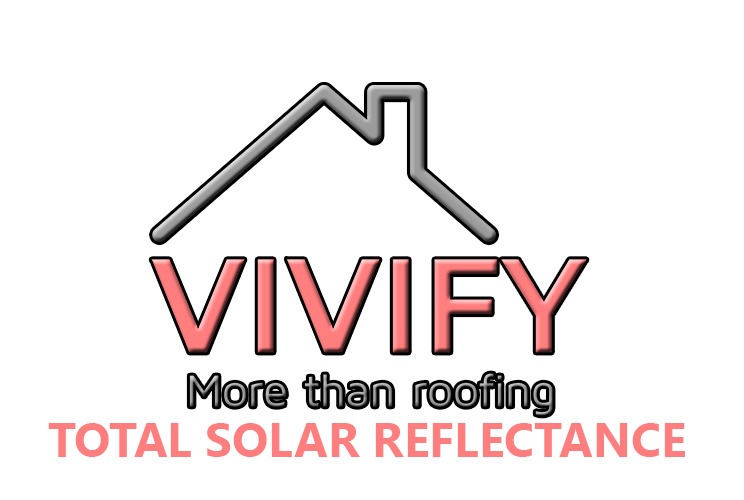
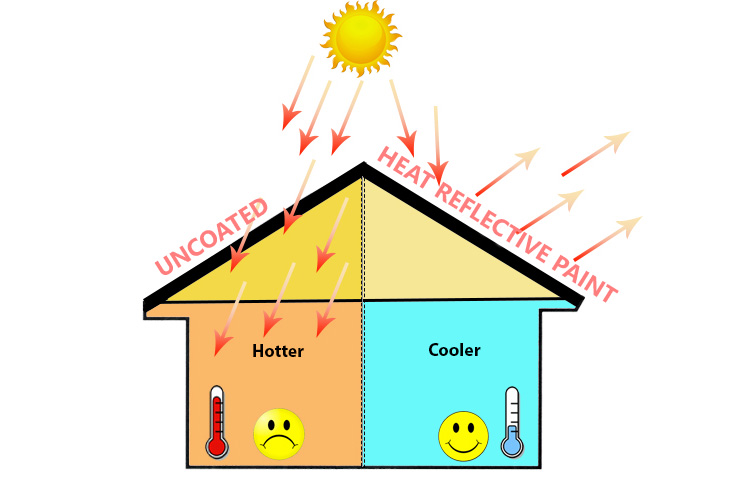



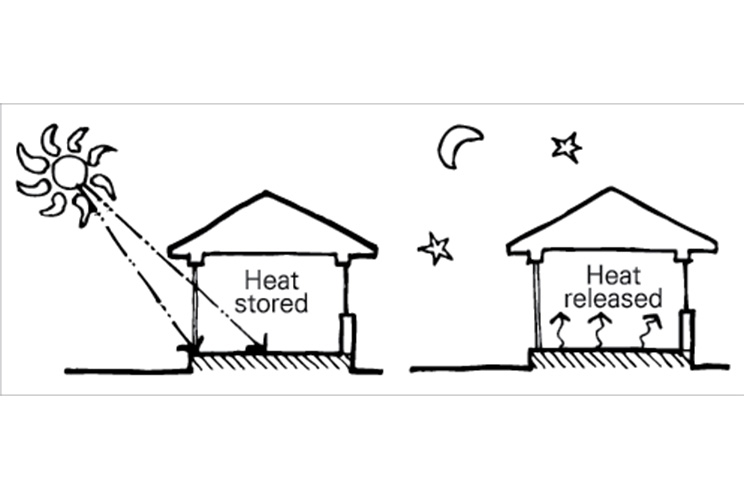 Colorbond Roof Sealing
Colorbond Roof Sealing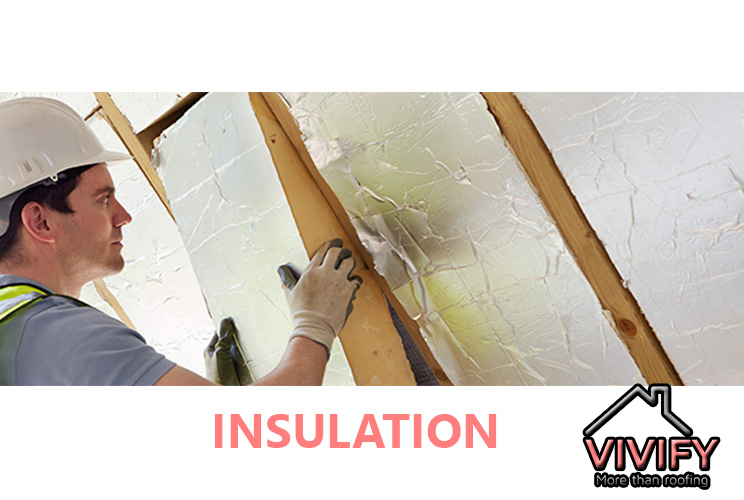
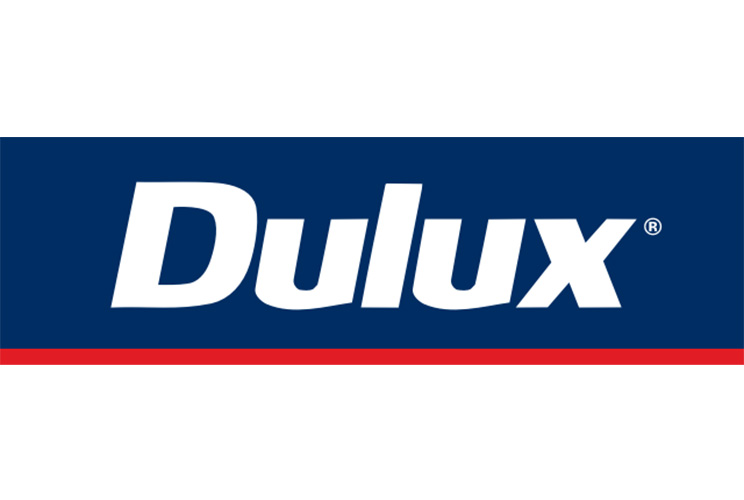
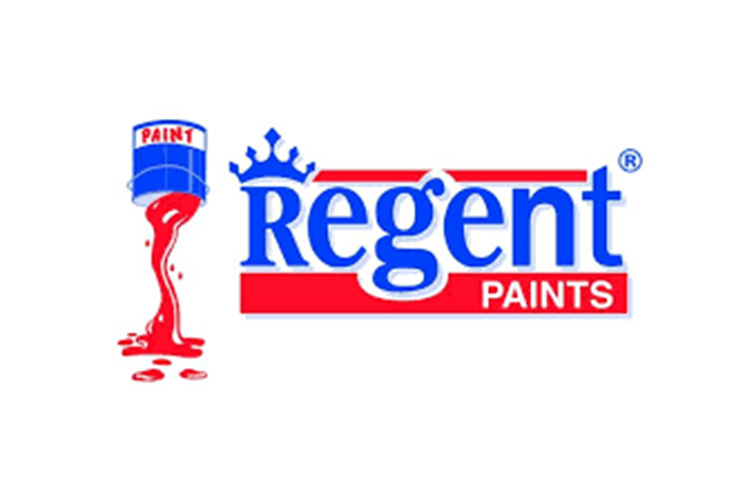 Nutech NXT Cool Zone
Nutech NXT Cool Zone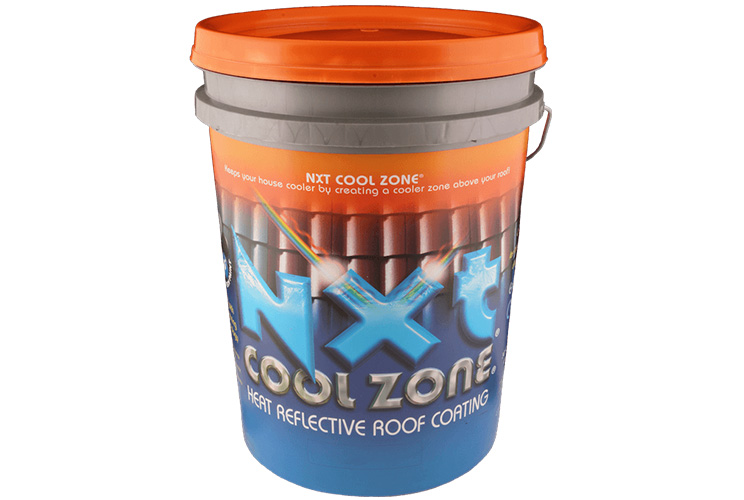

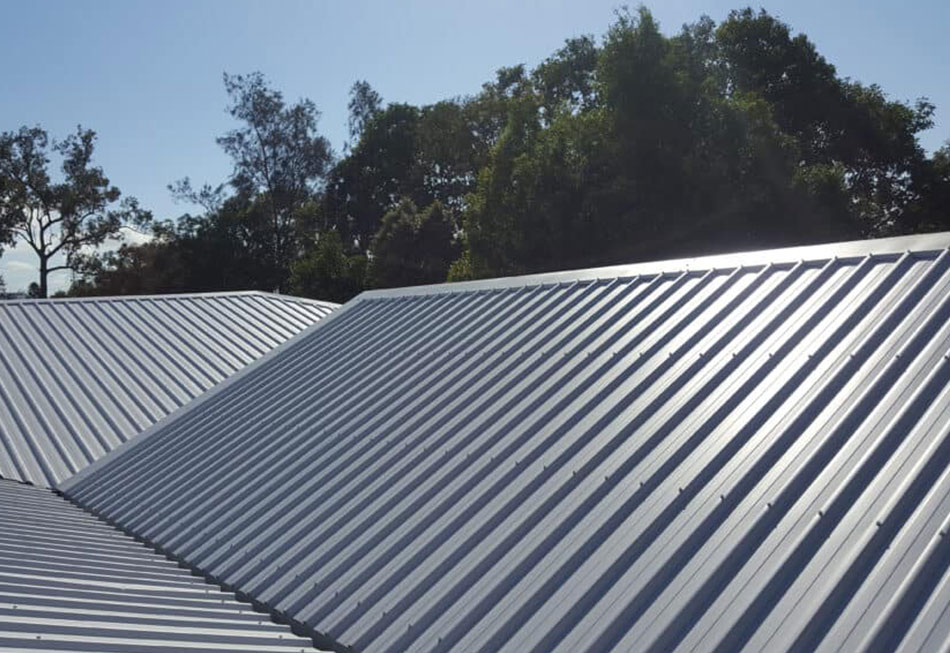
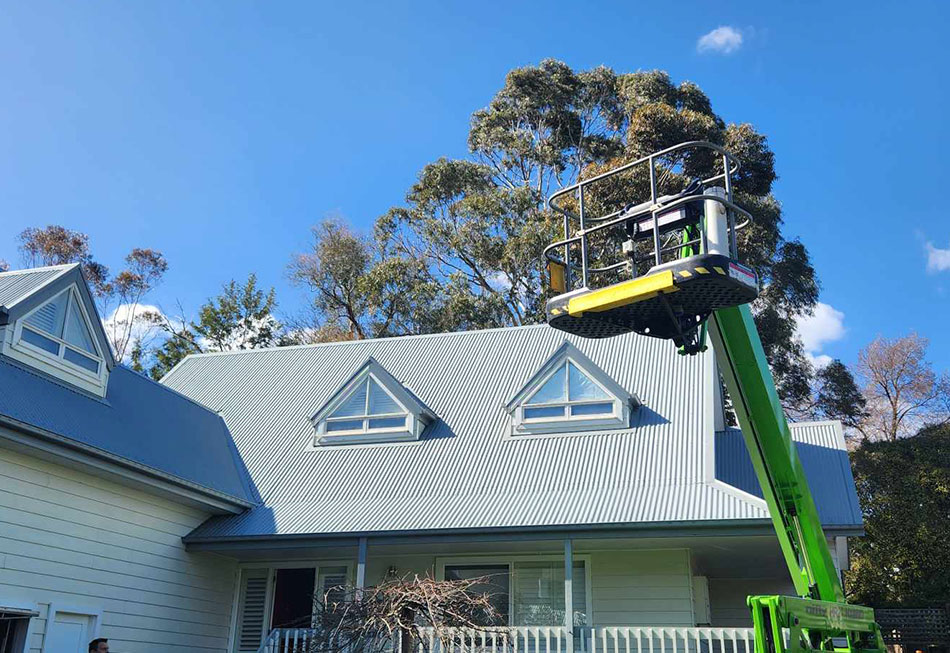
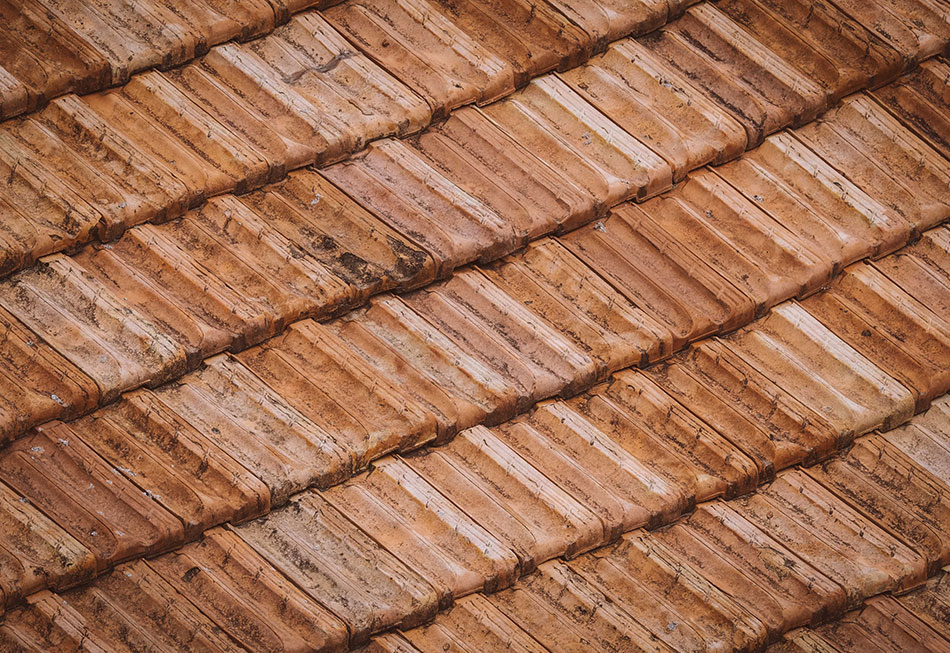

This Post Has 0 Comments